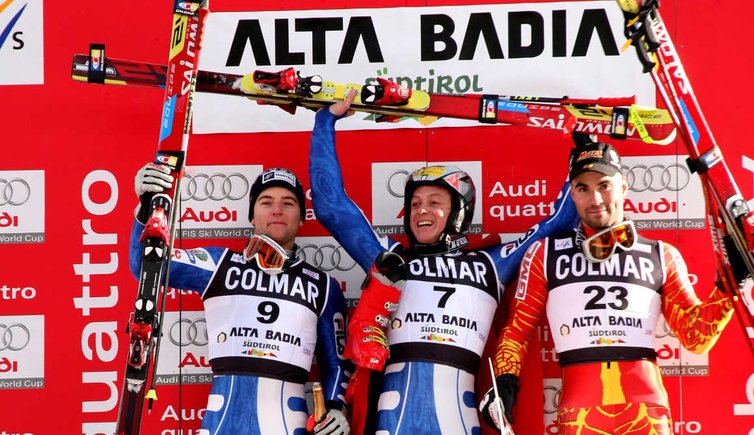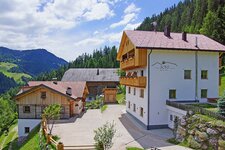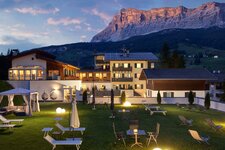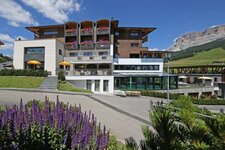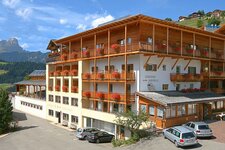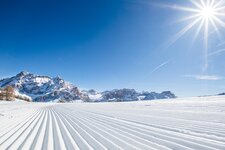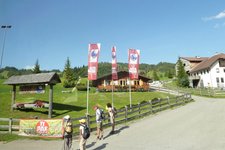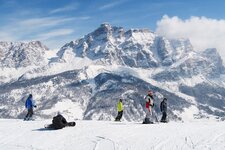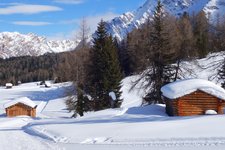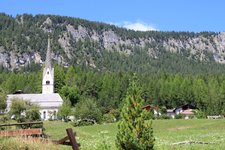Gran Risa, Alta Badia: Champions Challenge a Legendary Slope in December
Christened by Ingemar Stenmark's victory in December 1985, the Gran Risa in La Villa (La Villa) has progressively established itself as one of the most technically demanding and prestigious slopes on the Alpine Skiing World Cup circuit. Descending directly into the village amidst the woods of Piz La Ila, the slope is now a permanent fixture on the international competition calendar. Every December, it hosts the traditional giant slalom and, although less frequently, special slalom and parallel slalom races. In 2005, the addition of two bumps in the final section, the gobes dl giat (cat's bumps), allowed its homologation for the special slalom as well.
Along with the Podkoren 3 in Kranjska Gora, Slovenia, and the Chuenisbärgli in Adelboden, Switzerland, the Gran Risa is considered one of the three most technical and challenging giant slalom slopes on the World Cup circuit: its maximum gradient reaches 69%, with an average of 36%. Once prepared for races with the injection of high-pressure water into the snow, the already demanding Gran Risa transforms into a veritable ice chute!
While illustrious, Stenmark's name is only the first on a highly prestigious roll of honour. Among the giant slalom racers who have triumphed on this slope, the phenomenal Austrian Marcel Hirscher stands out, with six consecutive victories from 2014 to 2019, closely followed by Marco Odermatt with five wins. Alberto Tomba achieved four victories, while Henrik Kristoffersen, Max Blardone, and Kalle Palander have each conquered three.
The World Cup atmosphere ignites the day before the races with the bib draw ceremony in the centre of La Villa, followed by a party in the parterre tent with athletes, fans, and locals.
For the 2024-2025 FIS Alpine Ski World Cup, the Gran Risa will host two races: the traditional giant slalom on 22 December and a special slalom on 23 December.
The Gran Risa races are not just a top-tier sporting event confined to a December weekend: throughout the entire winter season, the legendary slope is an irresistible draw for those who love skiing and want to test themselves on the champions' track. Officially classified as a black run, north-facing and often icy, the Gran Risa requires excellent technique and is suitable only for the most experienced and well-equipped skiers. Before tackling it, honestly assess your abilities, and don't forget to sharpen your edges!
To descend directly to La Villa, less experienced skiers might choose the red Altin slope, which shares the initial section with the Gran Risa, or one of the easier combinations of blue slopes among Pre dai Corf, La Brancia, and the Bamby-Altin link, which joins the Altin only in its final stretch. In the Alta Badia ski area, there's never a shortage of alternatives!
Technical data for the Gran Risa slope:
- Start: 1,868 m
- Finish: 1,420 m
- Vertical drop: 448 m
- Length: 1,255 m
- Maximum gradient: 69%
- Average gradient: 36%
- First World Cup race: 15 December 1985 (Ingemar Stenmark)
- Disciplines: Giant Slalom, Special Slalom, Parallel Slalom
- Lift: Piz La Ila gondola, La Villa
